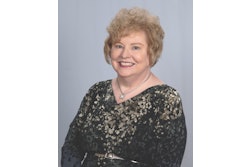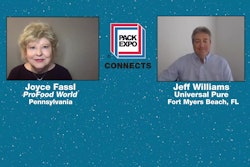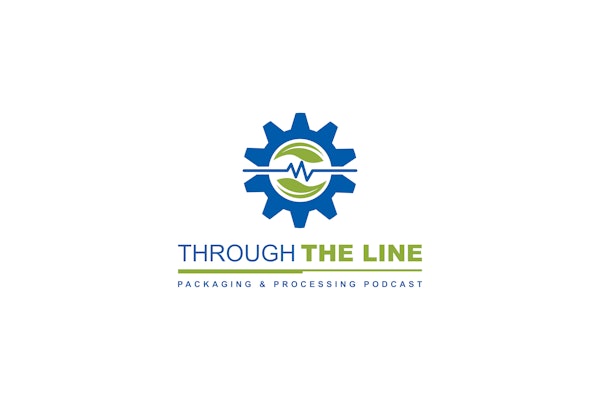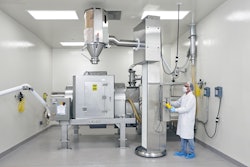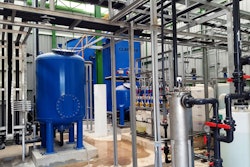
Doug Herald, vice president of operational strategy and continuous improvement, AmeriQual Group
David Navin, president, Spee-Dee Packaging Machinery
Stephen Schlegel, co-founder and managing director, FSO Institute
There are strength, speed, and accuracy in having a common language when performing a critical milestone event in a capital project, such as the factory acceptance test (FAT). That is why, five years ago, PMMI’s OpX Leadership Network published “One Voice Factory Acceptance Tests Protocols for Capital Equipment in the CPG Industry.” Since then, these protocols have provided guidance to thousands in our industry. Consumer packaged goods (CPG) companies and original equipment manufacturers (OEMs) have learned from and applied these best practices, resulting in better outcomes for all.
But 2020 threw us a curve ball. Yes, even FATs have been affected by the pandemic! So, how can we do virtual FATs? To answer that question, the OpX team quickly reassembled, added a few new players, and within a matter of a few months, published the virtual FAT (vFAT) addendum. The documents are complementary in style and substance, enabling the FATs to be conducted and keep important projects continuing efficiently.
There are many questions that arise for a vFAT such as:
- Whom do I involve, as we value our operators getting firsthand knowledge?
- What if I absolutely must be on-site?
- What technologies need to be applied?
- How can I be sure my team learns the key points in changeovers?
These and other questions create a tremendous opportunity for processors to have a dialogue with their OEMs. The best time to have the conversation is during the request for proposal (RFP) stage and then clarify as you finalize contracts. The time spent at the beginning will be repaid in the effectiveness of the FAT.
Other content you may be interested in:
Advanced Automation Tools May Be Just the Panacea Our Industry Needs
About the Case in Point Series
In the past few years, PMMI’s OpX Leadership Network has produced more than 20 manufacturing process-improvement documents for CPGs and OEMs. The FSO Institute has facilitated the adoption and implementation of these documents, especially for food and beverage manufacturers. In this Case in Point series with the FSO Institute, ProFood World presents actual cases to show just how CPGs are using OpX documents to improve their overall manufacturing health and their collaboration with OEMs and other suppliers. Learn more at www.opxleadershipnetwork.org and www.fsoinstitute.com.
Case in Point: AmeriQual Group and Spee-Dee Packaging Machinery
FSO Institute asked two industry leaders, Doug Herald of AmeriQual Group and David Navin of Spee-Dee Packaging Machinery, to share their experiences and observations regarding FATs.
FSO Institute: Doug, throughout your career, you have been responsible for many capital projects involving a large variety of processing and packaging equipment. Please share the challenges you have faced with FATs.
Herald: For many years, one of the biggest challenges the entire CPG industry faced when conducting FATs was that both CPGs and OEMs had their own approaches. Everyone, including our own engineers, had their unique way of doing things. There was no industry standard.
Seven or so years ago, my company was small but growing rapidly. We had incredibly talented people, but we did not have the bench strength or the systems in place like the major consumer products manufacturers. This put a lot of pressure on our engineers to keep up with all the work that needed to be done. Given the workload and there was no specific FAT process or standard, we addressed it the best we could. That meant fewer people were involved and the procedures used were those familiar to the OEM and our engineers. As a result, projects were delayed, cost was impacted, there was rework for the OEMs, and there were no real means of recording lessons learned as a means of improvement for the next project.
FSO Institute: The OpX Factory Acceptance Test protocols for the CPG industry were published five years ago. What are some of the lessons learned through your experiences in using this guidance to improve your ability to achieve vertical start-ups?
Herald: During that same time, I became an early adopter of the entire OpX Leadership Network and its industry guidelines being developed. As a member of the OpX Executive Council, I directly participated in the discussions about prioritizing what new best practices or guidelines would be developed. I saw firsthand the value of working with many large companies who were unselfish in providing their subject matter experts to work alongside smaller CPG experts and the OEM technical representatives. The development and publication of the “One Voice Factory Acceptance Tests: Protocols for Capital Equipment in the CPG industry” was underway, and we benefitted from that experience.
As noted in the document, the strategic objective for FATs is to achieve capital project excellence. As an industry, all can benefit from accepting:
- The miscommunication and misunderstanding, which are costly to all parties in both time and money, must be overcome or minimized.
- Documents must be fair and adhere to good standard business practices.
- For the CPG, achieving vertical start-ups (packaging and processing equipment/lines) more consistently and effectively is the goal.
There were many benefits to my company and our team, including:
- Our engineers had a standard protocol to follow, with results in better planning and minimizing guesswork, mistakes, and omissions.
- We engaged our workforce more effectively through hands-on training during the FAT that produced solid results. There was a deeper and broader ownership of the equipment. What used to be one or maybe two engineers attending, there are now four or more with greater diversity of thought and perspective.
- We enabled purchase agreements with our OEMs to be more thorough and contain greater clarity of expectations, resulting in a greater level of commitment from the suppliers.
- We included the OpX FAT protocol “Reflections” step during project close-out, such as what went well and what did not, and ideas for next time.
Bottom-line impact is noticeable. Given all of the above, our vertical start-up (ramp-up time from start-up to full production) has consistently improved by 66%. In addition, our relationships with key OEMs has flourished, resulting in better service and pricing.
FSO Institute: Doug, we are all aware the COVID-19 pandemic has provided many challenges to our industry. Company travel for on-site FATs has certainly been curtailed. Please describe how you and your colleagues have managed keeping your projects on track. How has the OpX vFAT been of value?
Herald: Coincidentally, we had several FATs occur right at the beginning of the pandemic. The new FATs for virtual use had not yet been published. Our participation in the FSO Manufacturing Health Roundtable (MHRT) monthly industry calls provided opportunities to discuss current hot topics, including doing FATs virtually. Through those MHRT discussions with my peers, combined with my team reviewing the existing FAT guidelines, we were able to organize our game plan and execute it.
I am thankful that the OpX Leadership Network published the vFAT addendum mid-summer. We reviewed those guidelines and have already used them as a basis to once again improve how we conduct FATs on a virtual basis.
FSO Institute: David, throughout the years, your company has been highly successful in delivering on your many clients’ expectations. With all that variety, please describe how the OpX FAT protocols for the CPG industry have been of value to your organization.
Navin: I think the biggest takeaway from the OpX FAT protocols is the idea that a successful FAT really begins at the RFP stage of a project. The early-stage alignment of the CPG’s expectations, the OEM’s capabilities, and what is needed from all parties to accomplish the desired outcome cannot be stressed enough. One of the first steps we take in reviewing an RFP is to develop an “exceptions and options” spreadsheet. The RFP is reviewed by the mechanical engineering, electrical and controls engineering, and project management groups. Each group has its own tab on the spreadsheet where they list exceptions, options, or alternatives to the RFP line items. In most cases, the FAT is also covered at this early stage. By defining what a successful FAT looks like at the RFP stage, we are able to get a clear vision of our customer’s expectations.
Ever since Spee-Dee started working with larger CPGs in the mid-1990s, we have encouraged on-site FATs. It is less time-consuming and costs less money for both parties if a machine is up to the customer’s expectations before it ever leaves our facility. We have put a great deal of time, effort, and expense into our business to make sure we’re set up to handle FATs. (See image on previous page.)
FSO Institute: Can you share some of the recent challenges you have been facing on providing FATs considering the COVID-19 pandemic? How has the vFAT document been of benefit to your team and clients?
Navin: We had a large filler project we were building for a company in Spain. Because of travel restrictions, they were not able to visit for the FAT. We used many of the tools described in the vFAT protocols and conducted a series of short virtual FATs over a few days using Microsoft Teams, a webcam, and an iPad. It certainly was not as productive as being on-site, but it was still very beneficial. Splitting this up into smaller chunks of time helped keep everyone focused. We also did a fair amount of video recording and photo documentation after the vFAT to help simplify the installation at the customer’s site.
FSO Institute: As we conclude, David, are there any lessons learned or “watch outs” for assuring successful completion of an FAT?
Navin: It sounds oversimplified, but project management and communication are the keys to a successful FAT. There is nothing worse for the OEM or the CPG than when an FAT becomes a design review. We always encourage the CPG to determine all vested parties and who will be visiting for the FAT early on, so they can also be involved in the design reviews. This reduces scope creep during an FAT.
A short pre-FAT meeting or web conference is also helpful, so that there are no surprises when a large group of people travel to check out a new machine.
Lastly, overcommunicate your level of readiness. It is better to reschedule than to waste people’s time.
Equipment Required for vFATs
- A solid webcam with remote control that enables the user to zoom in/out and pan sideways (controlled by the OEM). The camera system should be compatible with PC and Mac computers.
- A tripod, so the webcam can be mounted at the correct height for a variety of systems. A gimbal may also be used to improve camera movement.
- A large screen TV/monitor for the OEM, so the presenter can see what the participants see (if a second laptop is used as a participant) or mirror what is being shown on the camera output to choose the best output device to show.
- Wireless headsets for the OEMs: one for the presenter and one to plug into a second laptop, if present, to stop any sound interference and feedback from the audio output; noise cancellation headsets are best.
- PowerPoint or a similar tool to show slides containing the agenda and the series of checklist items to work through during the vFAT.
- VideoPoint or a similar software app that allows the user to monitor and show multiple webcam, video, IP camera, and streaming video feeds in PowerPoint. Open Broadcaster Software (OBS) manages multiple cameras/images for simultaneous display.
Optional equipment may include:
- Wireless keyboard and mouse
- Wireless clicker, if using PowerPoint
- Docking station to enable multiple USB devices to be connected, as many laptops are limited in the number of ports they provide
- Photography lighting/background kit to block out unnecessary or sensitive backgrounds that are not relevant to the vFAT, such as projects for other clients.

